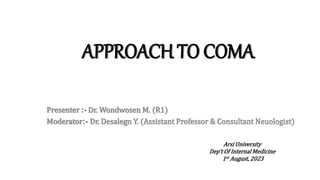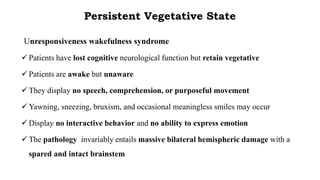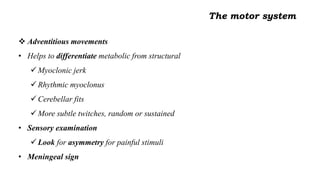The document provides an outline for approaching patients in a coma state, beginning with initial assessment of airway, breathing, and circulation. It discusses anatomy of consciousness and conditions that mimic coma such as persistent vegetative state. Common causes of coma including traumatic brain injury, stroke, and drug overdose are reviewed. The summary describes key components of examination such as vital signs, neurological assessment including brainstem reflexes, and initial investigations and management priorities like airway protection and monitoring of ICP.



























































